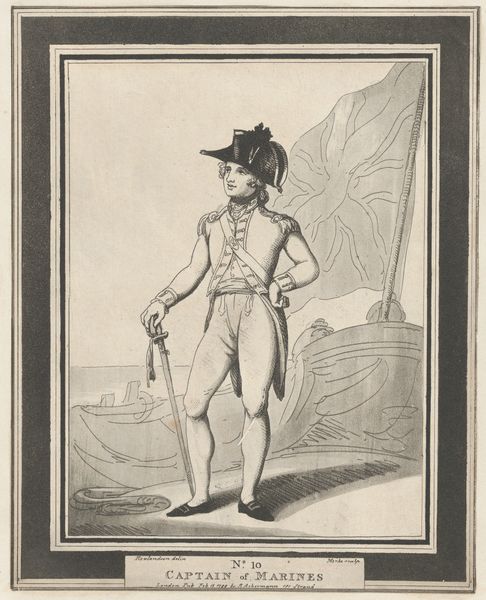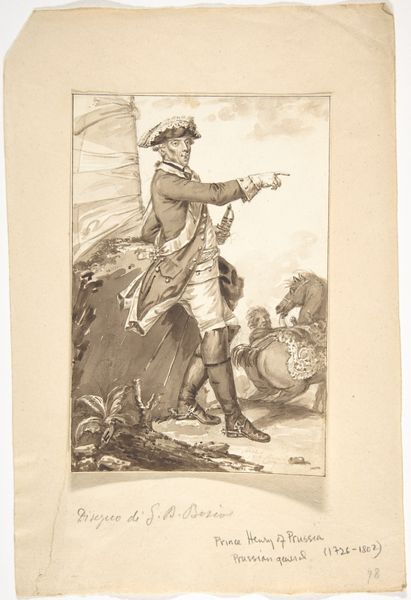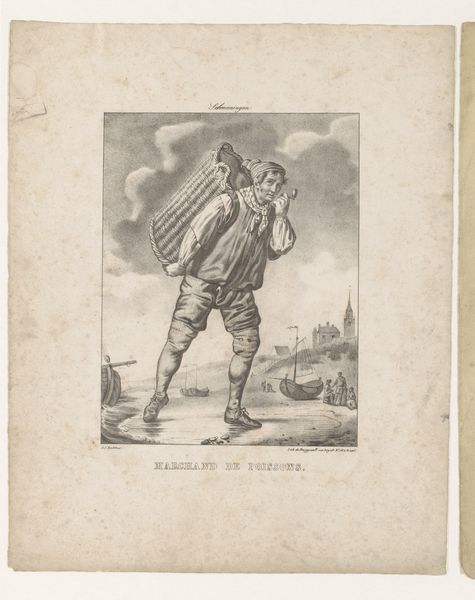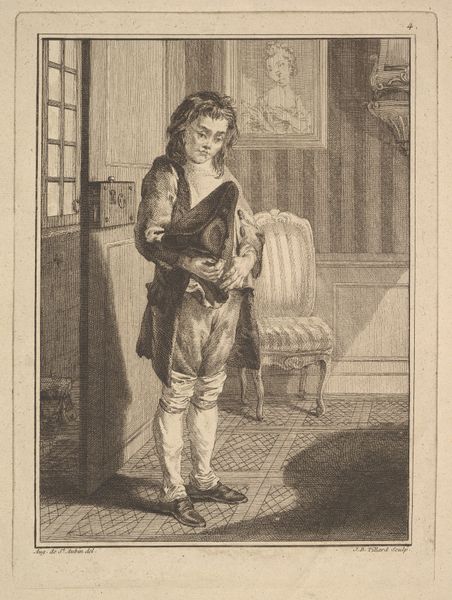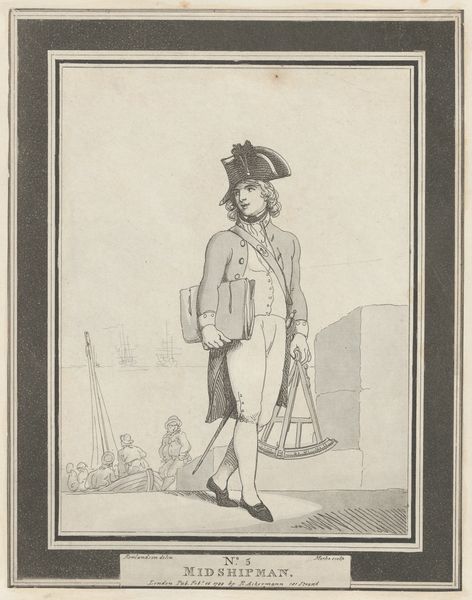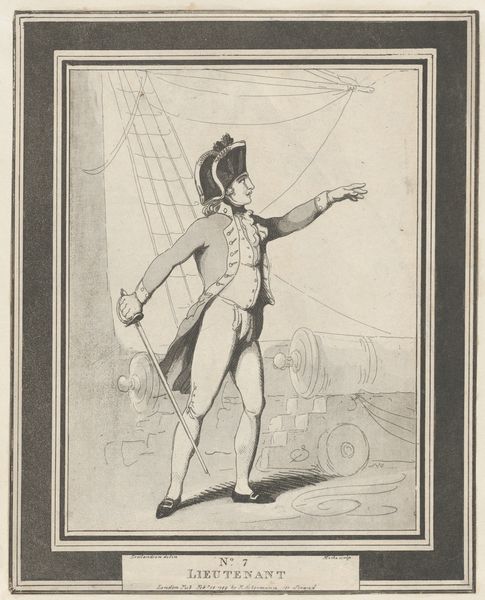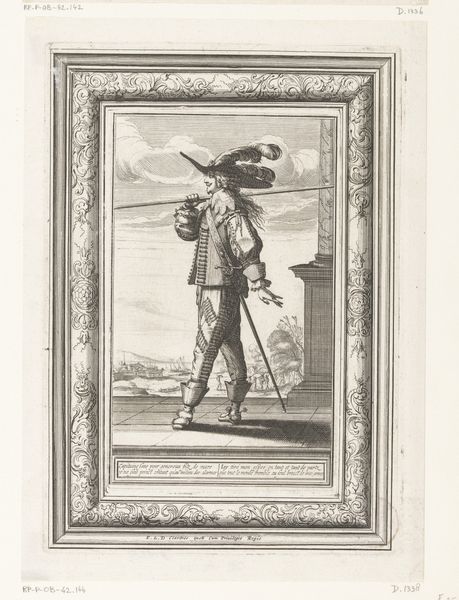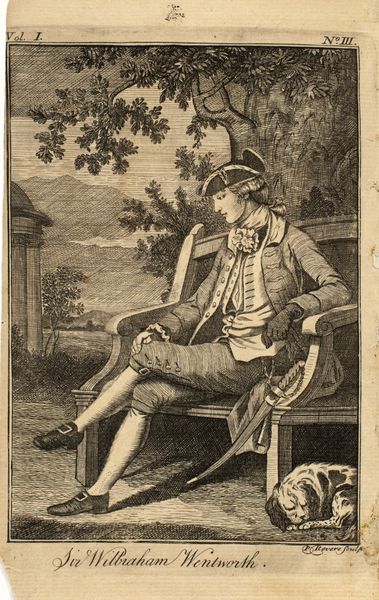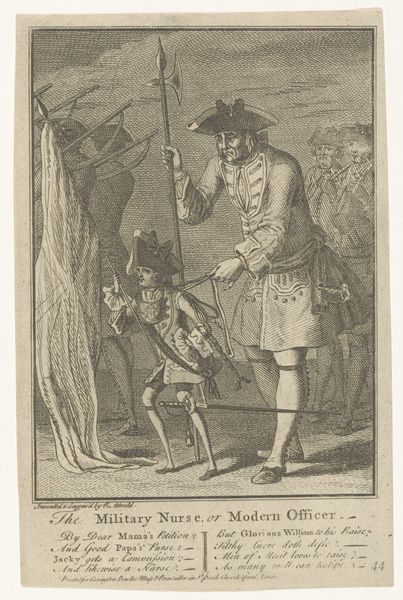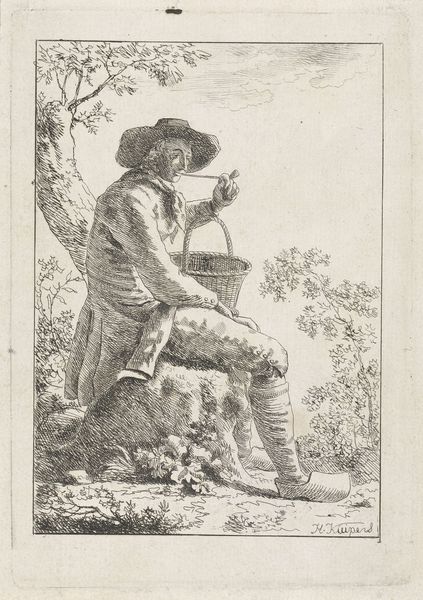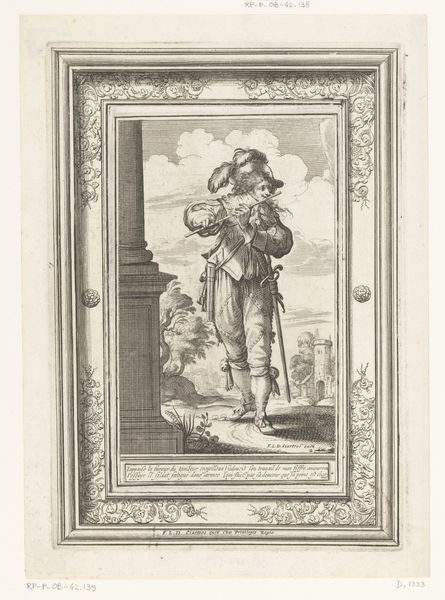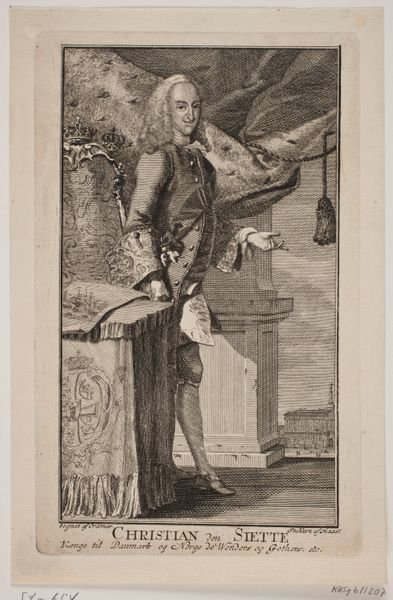
drawing, print, etching
#
portrait
#
drawing
#
neoclacissism
# print
#
etching
#
caricature
#
caricature
#
line
#
genre-painting
Dimensions: Sheet (trimmed and inset): 9 15/16 × 7 3/4 in. (25.2 × 19.7 cm)
Copyright: Public Domain
Editor: Here we have Henri Merke’s "No. 6: Purser" from 1799, an etching now held at the Met. The line work creates a humorous effect – almost cartoonish. What do you see in this piece beyond its face value as a caricature? Curator: This caricature offers a lens into the societal hierarchy and colonial structure of the British Royal Navy. Think about the Purser's role – he managed supplies, a crucial, yet often corrupt, position. The etching’s exaggerated features aren't just funny; they represent a commentary on the perceived moral failings of those in power within this system, don't you think? Editor: I see what you mean. The large stomach, the overflowing bottle labelled “Contac”--it all points to overindulgence. Does the setting – presumably a ship – further contribute to this reading? Curator: Absolutely. The confined space of the ship underscores the limitations and tensions inherent in a hierarchical structure dependent on resources and trade under imperial policies. Where did these resources come from, and at what cost? This wasn't just a question of individual failings, but a reflection of the systemic exploitation interwoven with colonial expansion. How does the Purser reading a document play into that, do you think? Editor: Perhaps the document represents the inventory he's supposed to be managing, but the etching suggests he's more interested in lining his pockets. So, the artwork uses humor to critique the Royal Navy and British Colonialism. Curator: Precisely. And remember that these caricatures circulated widely, influencing public opinion and challenging established power structures in an accessible way. This single image opens up critical dialogues about identity, gender, class and politics on a grand scale. Editor: This definitely makes me look at 18th-century art, and political satire, in a new light. I had underestimated its critical capacity!
Comments
No comments
Be the first to comment and join the conversation on the ultimate creative platform.
